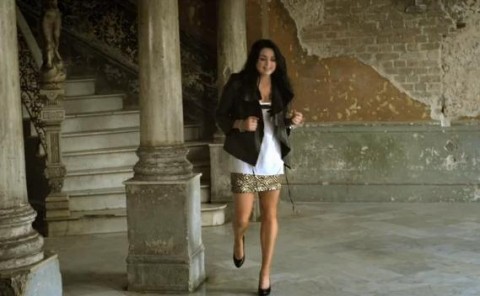

Have you ever bought a remastered issue of a favourite album, compared it to the not-so-great original CD release, and found its sound to be even worse?
Over the decades since compact discs first hit the racks, I have wasted thousands of hard-earned dollars buying and re-buying favourite albums. In the case of favourite artists and bands, I have had to replace favourite discs up to three times.
For instance, I have the whole King Crimson catalogue on vinyl. In some cases, I have British, American and Japanese pressings of the same discs. Then along came CDs, so I bought all the King Crimson discs, only to discover they were taken from vinyl masters. In 1989, the “definitive masters” were issued, so I repurchased them all again. Except they did it all again in the ’90s. And then, again earlier this decade. Last year, they finally went back to the original multitracks, remixing the albums, and releasing them in packages containing CDs and DVD-Audio discs, in surround sound. In the case of King Crimson, at least, the latest versions do sound spectacularly better than ever before.
Which brings me to the subject of today’s blog. I’ve had a CD in my collection since it was first issued in 1987. It’s a classic jazz release on the Bluenote label. Not as well known as many of the Bluenote jazz classics, Eric Dolphy’s Out To Lunch didn’t have the benefit of a follow-up, or a musician to perform the tunes around the world. In fact, by the time Out To Lunch was released in 1964, Dolphy was dead. On tour in Europe, Dolphy is believed to have died in Berlin of complications resulting from diabetes, but mystery still surrounds his demise.
Although Out To Lunch is revered by critics and serious jazz fans, and apart from Dolphy (who plays sax, flute and bass clarinet) has a stellar lineup including Freddie Hubbard (trumpet), Bobby Hutcherson (vibes), Richard Davis (bass) and Tony Williams (drums), somehow it hadn’t grabbed me on initial exposure.
Nevertheless, when I saw “the Rudy Van Gelder Edition” recently, I just had to make the purchase.
The 1987 edition was supposedly “made by transferring the one step analogue master to digital”, made possible by the fact that it was originally recorded directly to two-track analogue tape… no multitracks to mess around with. So it should have sounded pretty much as good as the original tapes, but I knew digital transfer had come a long way since 1987. And besides, the “remastered” version (which came out in 1999) was personally supervised by the original sound recordist, Rudy Van Gelder. The transfers this time around are to 24-bit resolution, so there should be no doubt that it sounds much better than the 1987 version, right?
Well, it’s not quite that simple.
I first played the remaster in my shitty car system, and for the first time, was genuinely blown away by the music. I could really hear what was so fresh about this music. While it has some free blowing and improvisation, and at times is quite wild, the songs have very tightly composed sections which are complex and sometimes oblique. Tony Williams (who went on to work with Miles Davis and his own group, Lifetime) plays the most bizarre time signatures, but it works. There’s a real sense of the exploratory about this disc, but also respect for tradition. It also almost single-handedly invents a new genre: chamber jazz.
So, when I got home, fired up with enthusiasm for this “new” discovery, I pulled out the 1987 issue and did a little A/B comparison. Expecting the 1999 remaster to sound spectacularly better than the 1987 version, I was gobsmacked with what I heard.
First of all, it wasn’t so much that one was better than the other; just the huge difference. It almost sounded like a different recording entirely. The original transfer seems to be a pretty straight transfer from the original tapes, and it keeps the mix exactly the same. It’s quite flat-sounding, and the stereo effect is extreme. In fact, the drums and bass are entirely in the right channel, with the majority of horn action going on in the left. Like a lot of early stereo recordings, this is a little artificial, but actually suits the “chamber” feel of the music, and allows the listener to hear a lot of the odd detail that a more conventional mix would disguise.
Then I plonked on the 1999 master, to find that the width of the entire sound image had been shrunk and concentrated in the centre. This is definitely a “remix” job, not just the transfer promised by the cover. It’s not hi-res detail that you notice, but instead a sound that’s much bigger-sounding than the earlier disc. The bass is noticeably pronounced, and there’s noticeable (digital?) glare from the horn instruments, together with a lot more hiss.
While initially quite exciting, after a while the 1999 mix starts to pall, and you find yourself losing interest. The 1987 version is less exciting, but over the long course, makes for more satisfying listening.
The problem is that now I want a bit of both worlds. I want a really hi-res recording that keeps the original stereo mix intact, along with the widescreen feel, while adding the extra sonic punch that the newer mix boasts. I can do without the horn glare, though.
I guess it will forever be impossible to mimic exactly what this album sounded like when it was recorded in 1964, and both versions do a reasonable job of presenting an incredible selection of music, but somehow my knowledge of these two very different versions of the same disc has left me feeling dissatisfied. If the original sound recordist can’t even get it right, then who can? Eric Dolphy certainly won’t be ticking anyone off for sonic transgressions any time soon, or forever. But I would like to know WHY Van Gelder felt it necessary to MIX the 1999 version without explaining his reasoning, and I’d like to know whether that glare at the top end is just the way those instruments sounded, or the result of loud mastering.
Reading up on the remastering of Bluenote classics, there appears to be quite a bit of debate, and these Van Gelder remasters have become quite controversial. If anyone knows where this confused soul (me) can find Van Gelder justifying his position, or a source of informed discussion on the internet, please let me know. GARY STEEL

Out To Lunch
Latest from Music

From The Archives: Tony Levin
Thirty-one years ago, GARY STEEL spoke to bassist extraordinaire Tony Levin who was about to perform in NZ with his good mate Peter Gabriel.

From The Archives: Pacific voyager Mike Cooper
Twenty years ago, GARY STEEL interviewed fascinating Rome-based UK-born folk experimentalist Mike Cooper on one of his Pacific journeys. Here's that story followed by

How not to meet a famous rock star
In 1989, CHRIS BOURKE was in New York and went along to a Frank Zappa book launch on behalf of a friend back home.

World’s Worst Records: Damon Albarn’s Everyday Robots
MATT KELLY is surprised and shocked to find that without the collaborations that are his stock in trade Damon Albarn has a yawningly empty

NZ rock still… rocks! We Search For Yeti!
They probably won’t be performing at Spark Arena anytime soon, but GARY STEEL reckons Wellington-based independent rockers Search For Yeti are well worth a









